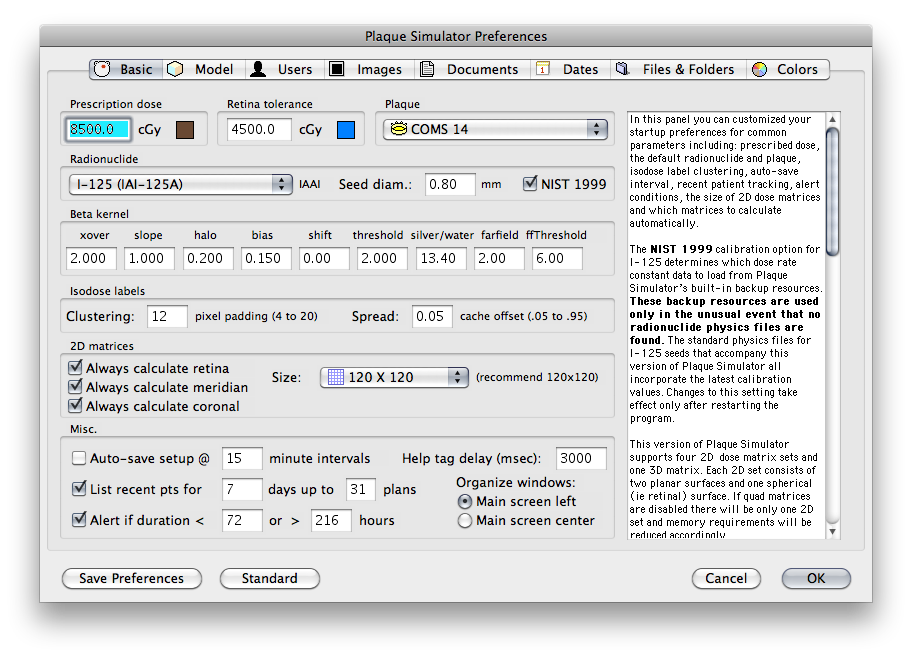Basic PreferencesIn this panel you may customized your startup preferences for common parameters including: prescribed dose, the default isotope seed and plaque, isodose colors, user defined points of interest, auto-save interval, recent patient tracking, alert conditions, the default size of 2D dose matrices and which matrices to calculate automatically. The NIST 1999 calibration option for I-125 determines which dose rate constant data to load from Plaque Simulator's built-in backup resources. These backup resources are used only in the unusual event that no isotope physics files are found. The standard physics files for I-125 seeds that accompany this version of Plaque Simulator all incorporate the latest calibration values. Changes to this setting take effect only after restarting the program. This version of Plaque Simulator supports four 2D dose matrix sets and one 3D matrix. Each 2D set consists of two planar surfaces and one spherical (ie retinal) surface. If you are running MacOS9 and memory is short you can disable quad matrices. If quad matrices are disabled there will be only one 2D set and memory requirements will be reduced accordingly. The point kernel parameters (crossover,slope,halo,bias,shift,threshold and silver/water) are semi-empirically derived parameters which modify the patch source dose calculation near the surface of beta-ray applicators such as the BEBIG Ru plaques in order to match measured values. The farfield and ffThreshold parameters modify the dose calculation far from the plaque surface. The default values listed here are approximate starting values used in the auto-optimization process. There is no reason for end users to change these values. All BEBIG Ru plaques MUST be individually calibrated. The point kernel nearfield crossover and slope parameters influence the dose calculation close to the plaque surface. These two parameters define the transition from an approximately inverse square model in the farfield to a linear model in the nearfield. The halo parameter represents the minimum distance from a source at which dose can be calculated, typically 0.2 mm. This limits dose on and within the plaque surface. The anisotropy threshold parameter is the distance at which the anisotropy kernel (which accounts for anisotropic attenuation and spectral hardening in the silver plaque) becomes fully effective. The shift parameter is an angular offset of the basic anisotropy kernel to account for differences between plaques. The bias parameter affects the rate at which the anisotropy correction is applied within the threshold range, typically it is around 0.15. The farfield parameter (n≈2) is the maximum power of the approximately inverse square behavior in the farfield. The ffThreshold is the distance from each source at which the inverse square model begins the transition from 1/r2 to 1/rn over a 5 mm range. The silver/water parameter is the pseudo specific gravity of water which would have the same effect on beta radiation as silver. |
